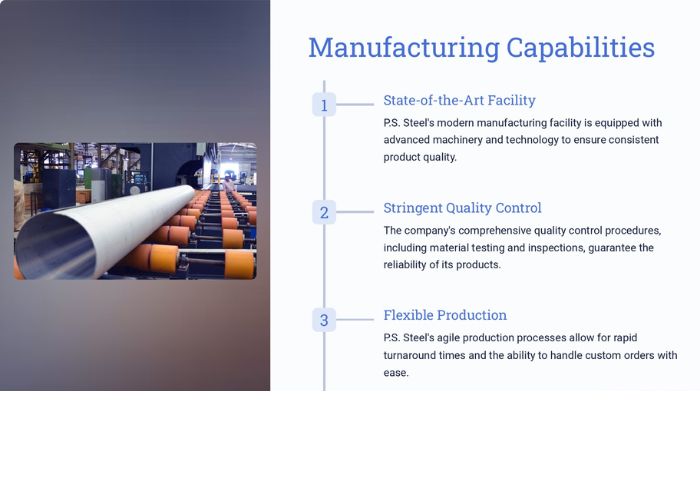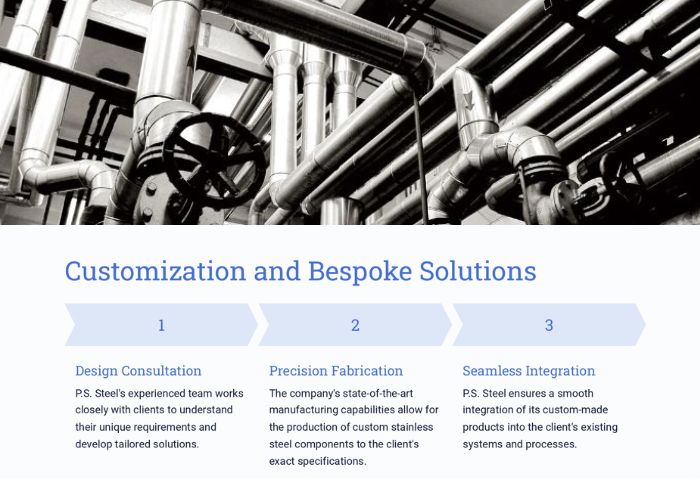Maintenance Tips for Stainless Steel Pipes to Ensure Longevity

Hey there! If you’re using stainless steel pipes in your projects or around your home, you’re already making a great choice. Stainless steel is known for its durability, resistance to corrosion, and overall reliability. However, even the best materials need a little TLC to keep them in top-notch condition. In this article, we’ll dive into some essential maintenance tips for stainless steel pipes to ensure they last as long as possible. Let’s get started!
1. Regular Cleaning is Key
First things first, let’s talk about cleaning. Stainless steel pipes are relatively low maintenance, but that doesn’t mean you can skip the cleaning altogether. Regular cleaning helps prevent the buildup of dirt, grime, and other contaminants that can lead to corrosion over time.

How to Clean:
- Use a soft cloth or sponge with warm water and mild detergent.
- Avoid using abrasive cleaners or steel wool, as these can scratch the surface.
- For stubborn spots, a mixture of baking soda and water can work wonders.
2. Avoid Chloride Exposure
Stainless steel is resistant to corrosion, but it’s not completely immune to it. Chlorides, found in salt, bleach, and some cleaning products, can cause pitting and corrosion. It’s best to keep your stainless steel pipes away from these chemicals.
Tip:
- If your pipes are exposed to chlorides, rinse them with fresh water as soon as possible.
3. Inspect Regularly for Signs of Wear
Regular inspections are crucial for catching any potential issues early. Look for signs of corrosion, leaks, or any other damage. Early detection can save you a lot of trouble (and money) down the line.
What to Look For:
- Discoloration or dark spots
- Rust or pitting
- Any unusual wear or damage
4. Ensure Proper Installation and Handling
The way your stainless steel pipes are installed and handled can significantly impact their longevity. Improper installation can lead to stress on the pipes, which may cause premature wear and tear.
Installation Tips:
- Make sure the pipes are properly aligned and supported.
- Avoid excessive force or bending during installation.
- Use appropriate tools and techniques to prevent damage.
5. Apply Protective Coatings
Applying a protective coating can provide an extra layer of defense against corrosion and other types of damage. There are various coatings available, such as epoxy, powder coating, and others, that can enhance the durability of your stainless steel pipes.
How to Apply:
- Clean the pipes thoroughly before applying any coating.
- Follow the manufacturer’s instructions for the best results.
- Reapply coatings as needed based on wear and exposure conditions.
6. Control the Environment
The environment in which your stainless steel pipes are installed plays a significant role in their longevity. High humidity, extreme temperatures, and exposure to harsh chemicals can all contribute to faster degradation.
Read More: How to Choose the Best Stainless Steel Pipe for Industrial
Environmental Control Tips:
- If possible, install pipes in a controlled environment with stable temperatures and humidity levels.
- Use insulation to protect pipes from extreme temperatures.
- Avoid placing pipes in areas with high chemical exposure.
7. Use the Right Type of Stainless Steel
Not all stainless steel is created equal. There are different grades, each with its own properties and best-use scenarios. Make sure you’re using the right grade for your specific application to ensure maximum longevity.
Common Grades:
- 304: Great for general use, offers good corrosion resistance.
- 316: Contains molybdenum, providing better resistance to chlorides and marine environments.
- 430: More affordable, but less resistant to corrosion – best for indoor use.
8. Regularly Test for Water Quality
If your stainless steel pipes are used in plumbing, the quality of water running through them can affect their lifespan. Hard water, in particular, can cause scale buildup, which can lead to corrosion and other issues.
Water Quality Tips:
- Test your water regularly for hardness, pH levels, and other contaminants.
- Use water softeners or filtration systems if necessary to improve water quality.
9. Address Issues Promptly
If you notice any issues during your inspections, don’t wait to address them. Small problems can quickly turn into big ones if left unattended.
Quick Fixes:
- Patch small leaks immediately to prevent further damage.
- Remove rust spots as soon as you notice them using appropriate cleaners and methods.
10. Consult with Experts
When in doubt, consult with professionals who specialize in stainless steel maintenance and repair. PS Steel can provide valuable advice tailored to your specific situation and help you implement the best practices.
Reade Related: Pipeline Industrial Fittings Solution
Final Thoughts
Stainless steel pipes are a fantastic choice for a wide range of applications, but like anything else, they need a bit of care to stay in top shape. By following these maintenance tips, you can ensure that your stainless steel pipes remain durable and reliable for years to come. So, roll up your sleeves and give those pipes the attention they deserve!

 PS Steel: Contact Us for the Best Stainless Steel Solutions!
PS Steel: Contact Us for the Best Stainless Steel Solutions!

